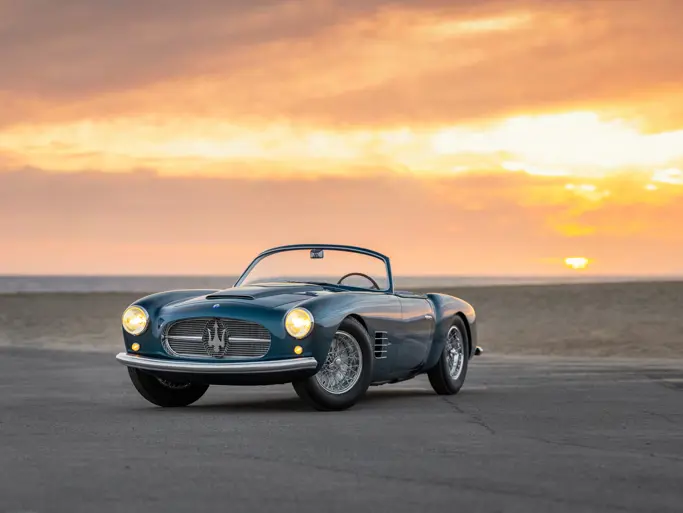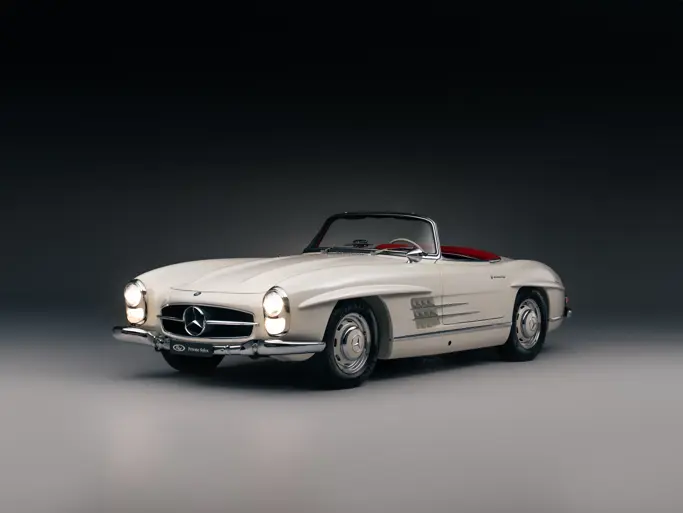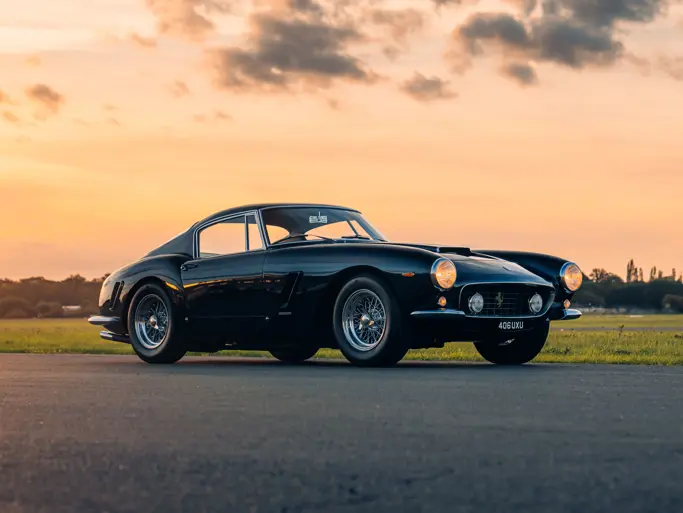 | Santa Monica, California
| Santa Monica, California
The histories of American presidential limousines are quite well-known, and it is widely recognized that there’s always a fleet of similar cars in use by the Secret Service. But presidents and their families often have their own preferences and needs for transportation, both official and informal. So it was for Mamie Doud Eisenhower, First Lady of the 34th President of the United States. The Eisenhowers desired a car that could be used by Mrs. Eisenhower and also serve as a formal and parade vehicle when needed. Hence, these circumstances set the stage for this particular automobile.
In March 1955, an order was placed with Cadillac for an eight-passenger Imperial sedan, body style 7533X. The Series 75 is generally reserved for Cadillac’s largest models and is generally clothed in limousine coachwork by General Motors’ in-house prestige coachbuilder, Fleetwood. It came off the Fleetwood assembly line in basic Black, with dark gray, plain broadcloth upholstery, power brakes, E-Z Eye tinted glass, a rear compartment radio, a heater and air conditioning. From the factory, it was sent to Hess & Eisenhardt, professional car conversion specialists in Rossmoyne, Ohio.
The highly-respected firm of Hess & Eisenhardt is now more likely known as Sayers & Scovill to today’s car enthusiasts. Hess & Eisenhardt produced Sayers & Scovill coaches from 1942 through 1974 when Cincinnati millionaire and Cincinnati Reds co-owner, George Strike, purchased it. Hess & Eisenhardt was split into three and sold in 1982. The one remaining firm still bearing the Hess & Eisenhardt name went out of business in the early 1990s. Hess & Eisenhardt was the builder responsible for the majority of American Presidential coaches in period.
Hess & Eisenhardt took the basic Imperial sedan and replaced the rearmost part of the roof with a section and rear window from a Series 62 Coupe DeVille. The result was the removal of the C-pillars and this pillarless “hardtop” limousine, allowed for an excellent viewpoint for press photographers looking to get their desired shot of the rear passengers. This also resulted in a lower rear roof line with a lower Florentine curve. A sliding sunroof was added, along with a grab rail for balance while standing in the moving car. Cadillac’s optional Sabre-Spoke wheels contribute to the factory-type overall appearance that this car conveys. The firewall data plate shows the special order conversion was complete on May 27, 1955.
The car remained in the White House garages for the remainder of President Eisenhower’s term. In January 1958, there was a request from General Motors to lend it out for display at the Washington Auto Show, which the government summarily rejected. After the Eisenhowers had left the White House, the car was reportedly sold to an American General who was working in Washington D.C. in 1988, it was sold to a prominent European collector of Presidential automobiles and cars of State. It was kept in his collection until acquired by another European collector in 2006.
Imposing and truly unique, it is still presented in original condition, complete with its authentic fittings and interior embellishments. A retractable glazed partition separates the front and rear compartments. All windows are fitted with electric windows and are fully functional. The rear bench seat is covered with the original upholstery in a pale blue-gray tone; while the more distinct blue upholstery of the driver’s compartment is believed to be of the period. The air conditioner is located in the trunk and feeds air to the interior via two transparent tubes. At some point, it is reported the original engine was replaced with a more powerful 1956 unit, which is listed as being a 365-cid (6.1-liter), 285-hp V-8 powerplant versus the 331-cid engine of 1955.
Wonderfully redolent of its age, the Cadillac gives the interested observer reason to pause for a moment when seeing the car in person and reflect on the American history that this car is documented to be a part of.
Much is rightly made of the first-line White House cars, from the Sunshine Special, the “Bubble-Top” Lincoln Limo that took Eisenhower into his first term, to the star-crossed presidential Continental (SS-100-X) that played a central part in the nation’s collective sorrow in Dallas in November 1963. The Eisenhower’s parade car is part of this rich history and offered with great dignity.





